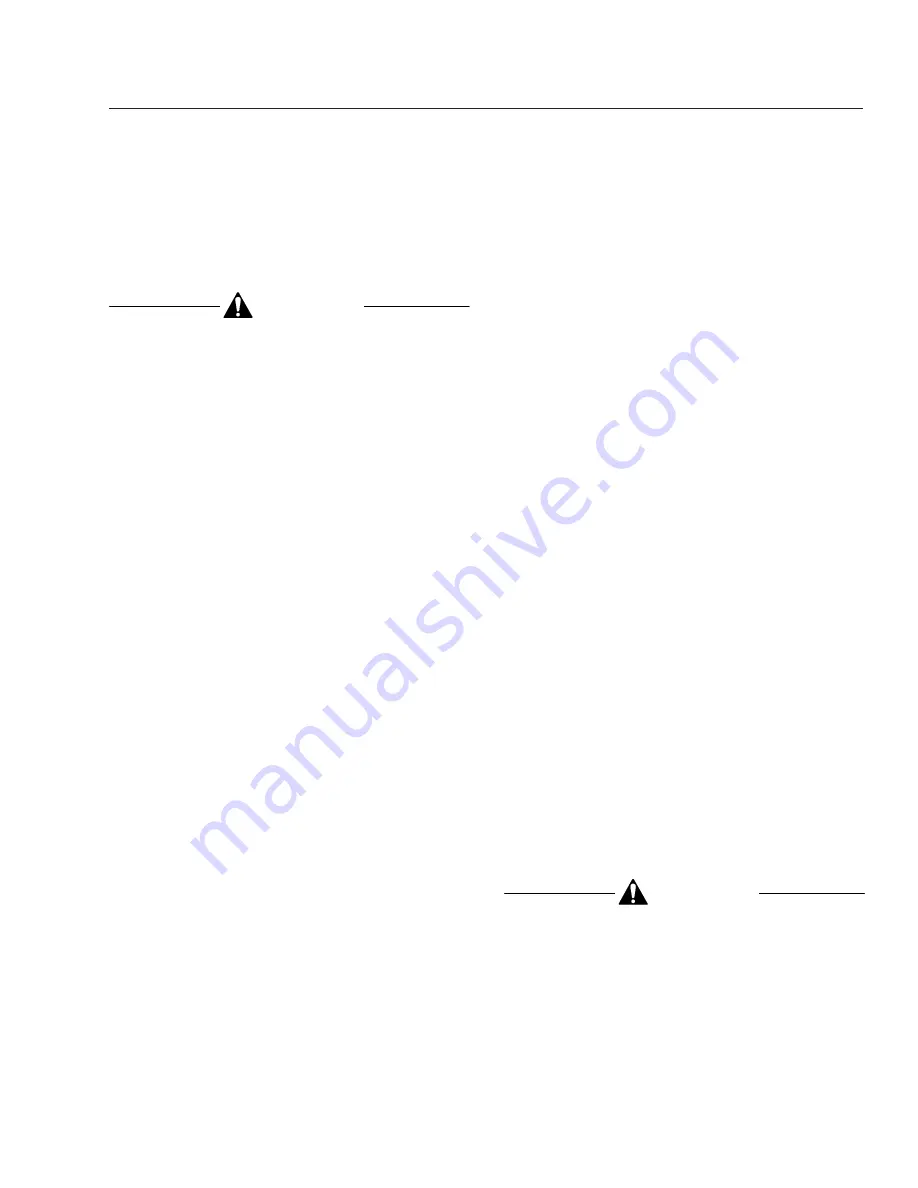
shutdown sequence. See
Fig. 7.3
. This override re-
sets the shutdown timer, restoring power to the level
when the red stop engine lamp was illuminated. The
switch must be recycled after five seconds to obtain
a subsequent override.
CAUTION
Using the override button so the engine operates
for an extended period may result in engine dam-
age. The operator has the responsibility to take
action to avoid engine damage.
DDEC VI Driving Tips
Accelerating the Vehicle
The accelerator pedal was designed to communicate
“percentage” of accelerator pedal travel to the engine
MCM. A throttle characteristic you may need time to
get used to, is the DDEC limiting speed governor.
This allows the driver to command total engine re-
sponse between idle and rated speed, such as accel-
erating at half throttle—an advantage when driving
under slippery conditions. To obtain 100 percent fuel-
ing at any speed, the accelerator pedal must be de-
pressed to the fully pressed position.
Shifting
Depending on your transmission model, the gear split
may vary from 400 to 500 rpm. The electronic gover-
nor provides almost no overrun capability; if the
transmission is downshifted too early, you will experi-
ence a temporary loss of pulling power until the en-
gine speed falls below rated speed. In general, when
using a 9-speed transmission, you should always
downshift between 1000 and 1100 rpm. This is true
even on steep grades with heavy loads. When using
an 18-, 15-, or 13-speed transmission, you will need
to downshift at an rpm that allows “less than rated”
rpm, before throttle application in the next gear
down. You may want to limit engine speed to 1900
rpm in all gears.
The DD15 engine provides horsepower through 2100
rpm, but fuel economy is not as efficient above 1800
rpm. If you decide to drive at lower rpm for improved
fuel economy, don’t let different engine noises throw
you off guard. The DD15 engine sounds quiet at
1400 rpm, almost as if it had quit pulling. If you had
a boost gauge to look at while driving, you would no-
tice the turbocharger maintaining steady intake mani-
fold pressure, even as rpm falls. Depending on the
air intake arrangement, you may also hear a “chuff-
ing” sound as the engine starts to pull hard at lower
rpm. This is normal, and caused by the velocity
changes of the air flow within the air intake plumbing.
Electronic engines can actually deliver more fuel at
lower engine speeds than at rated speed.
The DD15 engine has been designed for a very quiet
operation, but the air flow may be noticeable to the
tuned attentive ear. The turbocharger operates at
higher boost pressure, forcing exhaust to flow
through the exhaust gas recirculation plumbing. In
some situations the driver may believe they have ex-
perienced a charge air cooler system leak. Even
while connecting trailer lights and air hoses, the
driver may hear a different tone (exhaust and under
hood with the engine idling). If equipped with a turbo
boost gauge, the driver may occasionally note the
intake manifold pressure exceeds 35 psi (241 kPa).
Idling
The common belief that idling a diesel engine causes
no engine damage is wrong. Idling produces sulfuric
acid, that is absorbed by the lubricating oil, and eats
into bearings, rings, valve stems, and engine sur-
faces. If you must idle the engine for cab heat or
cooling, the high idle function of the cruise control
switches should be used. An idle speed of 900 rpm
should be enough to provide cab heat in above
freezing ambient temperatures.
Cold-Weather Operation
Precautions must be taken during cold weather to
protect your engine. Special cold-weather handling is
required for fuel, engine oil, coolant, and batteries.
The engine does not require starting aids down to
50°F (10°C). A grid heater is included for tempera-
tures between 50°F (10°C) and –4°F (–20°C). Tem-
peratures below –4°F (–20°C), will require a grid
heater, block heater, and oil pan heater.
CAUTION
NEVER use ether as a starting aid on a DD HD
engine. Doing so will result in injector damage.
A winterfront may be used to improve cab heating. At
least 25 percent of the grill opening should remain
open in sectioned stripes that run perpendicular to
the charge air cooler tube flow direction. This as-
sures even cooling across each tube, and reduces
Engines and Clutches
7.4






























